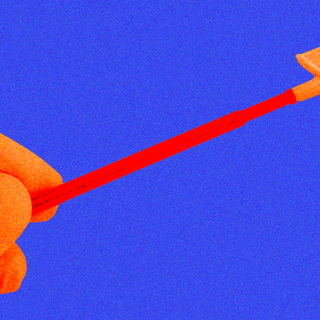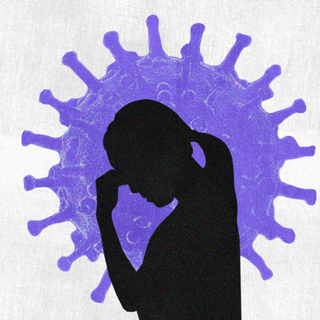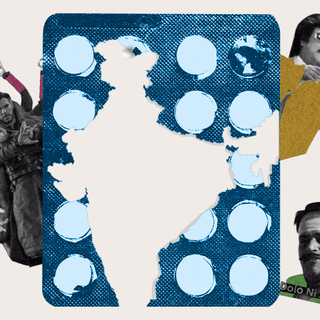
The Success of Govt’s Proposed Tele‑Mental Health Program Will Depend Entirely on Execution
Accessibility issues and privacy concerns may pose threats to the government’s digital mental health initiative, experts say.

“The pandemic has accentuated mental health problems in people of all ages. To improve the access to quality mental health counseling and care services, a ‘National Tele Mental Health’ program will be launched,” said Nirmala Sitharaman, India’s finance minister, in her speech at the Parliament yesterday.
Under the program, the government plans to launch 23 “tele-mental health centers of excellence” across the country — with the National Institute of Mental Health and Neuro Sciences (NIMHANS) serving as the nodal center, and the Indian Institute of Information Technology in Bangalore providing technological support to the program.
The mental health crisis has played in myriad ways over the last two years. If measured statistically, we know 56 million people were already suffering from depression and 38 million from anxiety disorders before 2020.In 2017, much before the pandemic hit, President Ram Nath Kovind had said, “India does not simply have a mental health challenge… it is facing a possible mental health epidemic.” Since the global health crisis unraveled, people’s mental health deteriorated further — due to grief, survivor’s guilt, anxiety about the health of their loved ones, and prolonged isolation.
Arguably, more focus can, perhaps, go a long way in reducing the stigma that surrounds mental healthcare in India. “This ensures that it helps the shift towards normalizing conversations on mental health, encourages people to recognize mental health-related illnesses, seek treatment and also remove stigma in the long run,” Kamna Chhibber, head of the mental health department at Mental Health and Behavioral Sciences, Fortis Healthcare, told The Indian Express.
But is removing the stigma enough in a country where the mental health professional-to-people ratio is currently dismal, and therapy being prohibitively expensive makes mental healthcare difficult to access for many? Even insurance for the same continues to remain a procedural quagmire despite the government enacting a statute mandating its coverage in 2017. In this scenario, investing in mental health infrastructure — and ensuring it is utilized — also becomes imperative.
Related on The Swaddle:
India’s Mental Health Professionals Are Burning Out Amid the Pandemic Rush on Their Services
As the Center for Mental Health Policy and Law highlighted yesterday, 94% of the budget of Rs. 670 crores allocated to mental health went to just two institutions: NIMHANS and the Lokpriya Gopinath Bordoloi Regional Institute of Mental Health. The NMHP — the flagship program of the government for mental health services — was granted a 6%, or Rs. 40 crores, which is the “same amount as last year.”
However, just last year, the Parliamentary Standing Committee on Health and Family Welfare had strongly criticized the underutilization of even available funds for mental healthcare. Their report stated: “The Committee expresses its deep concerns over the gross underutilization of funds under National Mental Health Program (NMHP) followed by [the] dwindling trend of allocation of funds [and] is of the view that a constant underutilization over the years under this head clearly points towards the… inability to comprehend the magnitude of mental health burden in the country. Various studies have highlighted the high prevalence of mental illness in the country but no substantial progress has been achieved to facilitate a robust mechanism for [the] delivery of mental healthcare services.” Has the government machinery taken any steps to remedy this yet before allocating a new chunk of budget? We don’t know yet.
The other question is, will the new program also remain promising just on paper, or will the promises transcend into reality? Perhaps, the strength and success of this new focus on mental health can only be tested based on implementation. While details on the operational aspects of the program are yet to be released, experts have expressed concerns on two fronts: accessibility of digital services, and privacy of data.
Only 38% of households in India are “digitally literate,” which had even forced the government to revise its policy on mandatory pre-registration for Covid vaccines. A report from 2018 also suggests that 26% of adults in India do not own any phone at all — among the rest, only 22% own smartphones and 51% own feature phones. It may be important to factor that in and, perhaps, design the program in a way that doesn’t necessitate smartphone access.
Privacy is another looming concern. In the past, there have been instances of anonymous data of people, who contacted suicide prevention helplines, being sold for commercial purposes. As Tanmoy Goswami, a mental health reporter wrote, “Even in developed countries where there are far greater safeguards and awareness of data protection, we’ve had incidents of suicide prevention helplines allegedly selling ‘anonymized’ user data for commercial purposes… opening up murky questions about user consent and the limits of that consent extracted at a time when the user might be highly vulnerable and not fully aware of what they are signing up for.” In a country where awareness regarding digital privacy is already low, this would be another factor that could derail the program — or, at the least, make people hesitate to resort to it — in the absence of strong safeguards.
Related on The Swaddle:
Hor Women, Children With Preexisting Mental Illness, Treatment Is Out of Reach During Covid19
Moreover, to what extent can counseling help citizens who are struggling with a lack of income? Therapy, while a useful tool, can neither feed nor clothe nor provide shelter to people. Perhaps, an approach focusing on mental health not just as a domain in itself, but as a broader subject that is impacted by other domains can be useful, in that sense.
In the past, rapid urbanization and congestion in cities, concerns about food security and water safety, rising costs of health care, women’s safety, and environmental pollution, have all been linked to poor emotional wellbeing. “The quest [for] happiness is closely tied to the quest for sustainable development which is a combination of social inclusion and environmental sustainability… A narrow-vision focus on economic development may have given us a better GDP and increase in per capita income — but moved our focus from environmental sustainability, social welfare, emotional and mental wellbeing of our people,” Pranab Mukherjee, the former Indian President, had said in 2018 after India dropped to 133rd place on the index. Last March, it ranked 139th.
“If all our other sectors — from education to healthcare at large, to infrastructure, to labor, and employment, to women and child development… each of them with much more sizeable allocations — do their job well, if we as a society can ensure safety and dignity for every citizen, especially those most marginalized, we will automatically see a mental health revolution,” Goswami wrote, adding, “This is the magic of mental health. Everything impacts it, and it impacts everything.”
Given that the budget was announced just yesterday, the promises will no doubt take time to come to fruition. While it may be pessimistic to believe that it’ll necessarily fail or be replete with a colossal number of discrepancies, it’s also important to bear in mind that the battle against poor mental healthcare is far from won. The citizenry being aware, and in pursuit of accountability, could turn out to be a helpful way to pave the path for a robust mental healthcare infrastructure accessible to people across different socio-economic strata.
“…it is refreshing to see an effort being made to democratize mental healthcare access using technology that’s not a bot,” Goswami concluded, adding: “The mental health community will hope that this project will draw upon the wisdom of experts, including people with lived experience from the most marginalized communities and across linguistic groups, so that safety and dignity are built into the user experience.”
Devrupa Rakshit is an Associate Editor at The Swaddle. She is a lawyer by education, a poet by accident, a painter by shaukh, and autistic by birth. You can find her on Instagram @devruparakshit.
Related


Emotional Distress May Increase Risk of Covid19 Infection and Severity of Symptoms: Study
